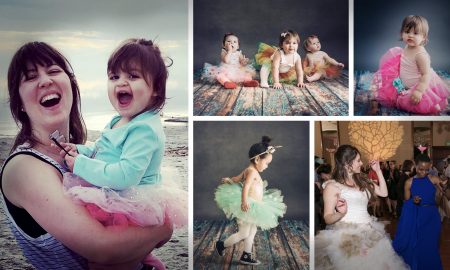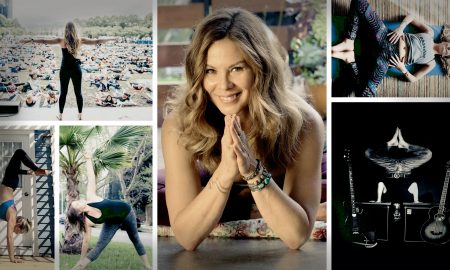

Today we’d like to introduce you to Andrea Bersaglieri
Hi Andrea, so excited to have you on the platform. So before we get into questions about your work-life, maybe you can bring our readers up to speed on your story and how you got to where you are today?
I was born and raised in the San Francisco Bay area isn’t necessarily rural, but in my hometown of San Anselmo I felt surrounded by trees and greenery. I was lucky enough to spend a lot of time in nature, going camping with my family and hunting with my dad. I always liked to draw and decided to study art in college.
I came to Southern California to attend California State University, Long Beach where I earned an MFA in Drawing and Painting. At school I met many fantastic young artists and had dedicated professors who became lifelong friends and mentors.
After college I worked and studied in Florence, Rome and Philadelphia developing a deeper understanding of western art history and traditional art making techniques. After returning to California I started a family with my husband who is also an artist, Hagop Najarian, and began teaching Drawing and Painting at Cerritos College and California State University, Long Beach.
When we settled in the LA area I instantly fell in love with the vibrant art scene. It is incredibly diverse, open and welcoming. The art community is a unique characteristic of Los Angeles. There is a vast network of artists of every level of success, socioeconomic level and cultural background. Commercial galleries, artists-run spaces, collectives, individuals; there really is a place for everyone and it feels more encouraging than competitive (although with so many outstanding artists it is competitive).
Over the years I began to chafe at the lack of trees, hills and general greenery in the LA suburbs where we live. Lots and lots of cement! We are lucky enough to have a small backyard, so I became invested in gardening as a way to make my immediate surroundings feel more welcoming and give me something green to live around. It is through working with plants that I have learned about the beautiful, symbiotic ecology happening right outside my door. Through gardening and the mini-ecosystem of my yard I have a front row seat to the effects of the climate crisis in real time. Climate and, by extension, its effect on ecosystems are the true engines of existence and I could see changes as they happened. I began visually documenting the plants, roots, soil and ephemera I found in my yard as a way to examine them. Drawing something is a form of research and a way to analyze objects and concepts. In this way, the utilitarian documentation and research merged with my studio work.
Would you say it’s been a smooth road, and if not what are some of the biggest challenges you’ve faced along the way?
Our current world so so filled with truly harrowing circumstances for so many people: Forced immigration, wars, climate fueled fires and weather related tragedies. Any struggles I experienced are insignificant and are not worth mentioning.
Appreciate you sharing that. What else should we know about what you do?
The thing that I absolutely love about the creative process, mostly drawing and painting for me, is that it affords a way to observe, investigate, analyze and learn about the subject or idea you are focused on. So when my gardening investigation merged with my studio it felt like all creative stars aligned and a perpetualness developed. I’d find something in my yard and feel compelled to document it, which led to research, which led me back to the garden and a new way to approach that, which led me to notice something differently and send me back to the studio and on and on it goes. The resulting artwork is simply a byproduct of this action.
My work consists of analytical, observational drawings, paintings and prints of seemingly banal organic specimen found in my urban/suburban environment. The subject matter and approach has evolved in recent years and taken on increasingly scientific methodologies in reaction to the worsening climate changes. By calling attention to the usually unnoticed roots, rocks, soil clumps, tubers, fungi, dead or decomposing forms, compressed rotting flotsam and the decaying matter beneath my feet, metaphors of the interconnectedness of nature, human, and culture emerge. Soil itself is an incredibly fascinating subject that knits together all of these ideas. Something as mundane as dirt, when examined closely, reveals itself to be the holder of life itself, both future and past.
A few years ago I joined an international art collective called ecoartspace that connects creatives from all over the world who are working with ecological issues. Through ecoartspace I have met other artists, scientists and artist-scientists who also work with soil and in 2024 some of us traveled to Florence, Italy where we had the opportunity to present our work at The International Union of Soil Scientists Centennial Conference, a conference of soil scientists from all over the world. Artists and scientists have very similar goals. We are both trying to figure out and understand what is happening. The conversations between the soil artists and soil scientists at the conference were enlightening for all of us.
At the conference I learned about the preciousness of soil as a resource and that we are losing it 10x faster than it is being replaced due industrial farming, erosion and deforestation. These are relatively easy things to to fix. If we had the will we could change our farming practices overnight by ending our reliance on monocultural practices, pesticides and herbicides. We already know how to do this. Soil cleans our air, holds our water and grows our food. It is also one of our main carbon sequestration tools, and does not require factories or burning fossil fuels to do it.
Making a career in the arts requires faith and conviction and a lot of quiet work alone in the studio. It took me 30+ years to find the right balance of visual language and focus for myself. I get immense satisfaction and sustained inspiration from the cyclical nature my work has developed. This provides me the energy to keep going and pass along what I discover to my students and my peers and my audience as I continue what I expect to be a lifelong journey of discovery.
What do you like best about our city? What do you like least?
I love the diversity and the creativity and the openness of LA and this is especially true of the art scene here.
I dislike the incessantly sunny climate which has only been exacerbated by the climate crisis.
The recent fires have highlighted both ends of the spectrum with so many incredible people coming together to help those that have lost so much in the fires that were caused by a climate that is increasingly, perpetually sunny except for every ten years or so when we get all of our rain at once.
Contact Info:
- Website: www. andreabersaglieri.com
- Instagram: @andi_bers
- Facebook: Andrea Bersaglieri



















